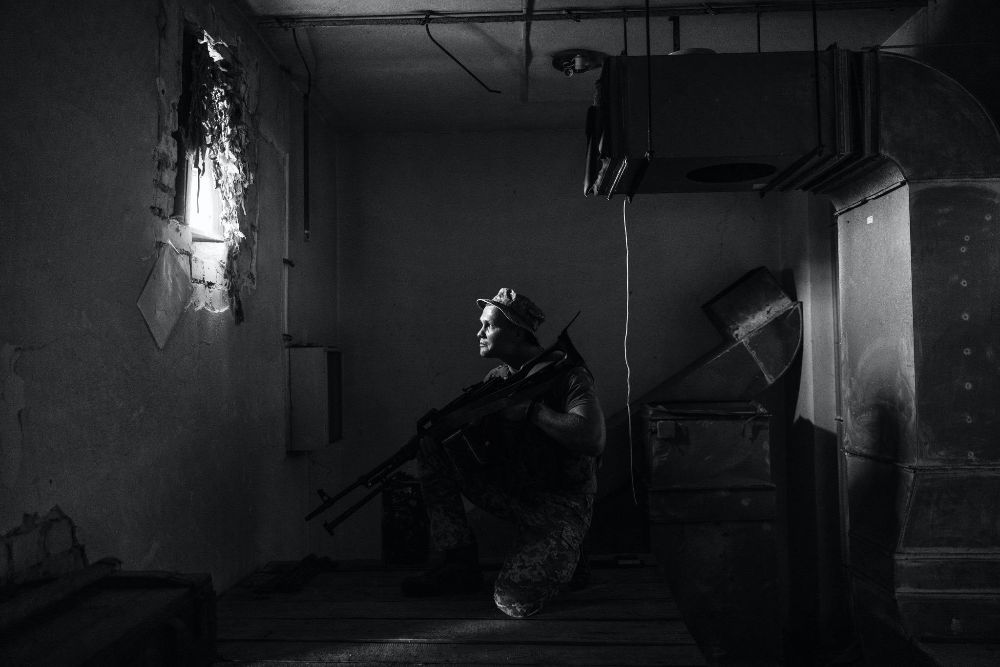
Near Mariinka. Image by Paolo Pellegrin/Magnum, for The New York Times. Ukraine, 2021.
In late 1991, I traveled across the former Soviet Union just as it was breaking apart. The series of newspaper articles that followed, Awakenings, focused on the rediscovery of cultural and historic roots that had been suppressed during seven decades of communist rule. The dispatch from Kyiv? “For Ukrainians, No Looking Back.”
In the winter of 1994, on a similar trip, the mood was starkly different. An ethnic Russian nationalist had just been elected president of Crimea, at the time a semi-autonomous region of Ukraine, and then-Russian President Boris Yeltsin was loudly asserting his right to intervene militarily in any of the former Soviet republics. We called that series of articles Back to the Future.
Three decades on, that future reprise of Cold War nightmares is back with a vengeance.
Russia is invading Ukraine from all sides. The U.S. is scrambling for a unified stance on sanctions. The tiny former Soviet republics of Lithuania, Latvia, and Estonia are anxiously wondering how much actual protection they’ll get from their memberships in NATO that so enraged their former rulers in Moscow.
The first step in confronting the most dangerous European crisis since World War II is understanding the people, places, and motivations that led to the current dreadful moment.
For a deep dive into what is driving Russian President Vladimir Putin, read the masterful 2019 account by grantee Sarah Topol for The New York Times Magazine.
To understand how the eight-year stalemate in eastern Ukraine played both ways—on the one hand, making many ethnic Russians of the region long for Soviet times; on the other, giving Ukrainians across the country a sense of national identity they had struggled to achieve for 30 years—read grantee James Verini’s long essay, also in the Times Magazine, from earlier this year.
And if you want deep history and vivid, telling anecdotes, there’s no better place to start than Imperial Gamble: Putin, Ukraine, and the New Cold War, the prescient 2015 book by Pulitzer Center senior adviser Marvin Kalb.
These are among the more than 150 reports on Ukraine supported by the Pulitzer Center in recent years, all of them easily accessible on our website. I hope you’ll take a look and join this debate. What is happening in Ukraine is no doubt a tragedy for that country. It is also going to affect us all.

Impact
The 2021 George Polk Award winners included Azmat Khan, the Pulitzer Center’s newest board member, and Ian Urbina, a Center grantee. Urbina’s reporting for The New Yorker on European Union migration policies in Libya was recognized in the International Reporting category. Khan and her team at The New York Times won in the Military Reporting category for their long-term investigation into intelligence failures and civilian deaths related to airstrikes in the Middle East.
This message first appeared in the February 25, 2022, edition of the Pulitzer Center's weekly newsletter. Subscribe today.




